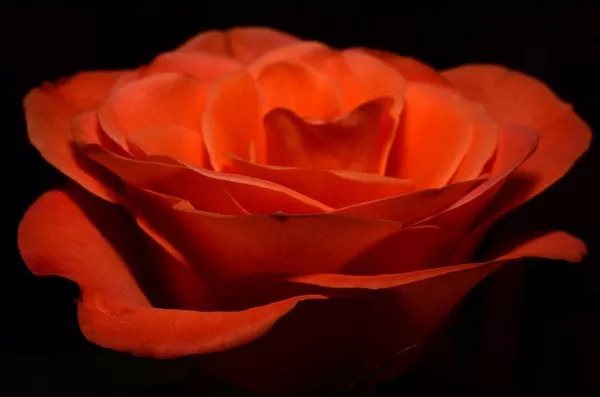From ancient mythology to modern culture, the red rose has held a position of profound symbolism and significance. Revered for its striking beauty and deep crimson hue, this iconic flower transcends mere aesthetics, carrying layers of meaning that have evolved over centuries. In this comprehensive exploration, we delve into the rich tapestry of meanings associated with the red rose, uncovering its cultural, historical, and emotional dimensions.
Historical Roots and Cultural Significance
The red rose’s symbolic journey begins in ancient times, where it was revered in Greek and Roman mythology as a representation of love and beauty. The goddesses Aphrodite (Venus) and Venus were often depicted adorned with red roses, linking the flower directly to themes of romance and desire. In Roman society, the red rose also signified confidentiality, with roses hung from ceilings during important meetings as a reminder that discussions held in the room were to remain secret.
As Christianity spread throughout Europe, the red rose took on new layers of meaning, becoming associated with the Virgin Mary and the blood of Christ. Medieval Christian mystics used the red rose as a symbol of martyrdom and sacrifice, further enriching its symbolic importance.
During the Renaissance, the red rose continued to flourish as a symbol of passionate love, often depicted in art and literature as a token of affection exchanged between lovers. Shakespeare, in particular, immortalized the red rose in his works, notably in “Romeo and Juliet,” where he poetically describes Juliet as the sun and Romeo as a rose.
Symbolism Across Cultures
Beyond Europe, the red rose holds significance in diverse cultures around the world. In China, for instance, it symbolizes happiness and celebration, often used in traditional weddings and festive occasions. In India, the red rose is associated with devotion and spirituality, used in religious ceremonies and offered to deities.
In Islamic culture, the red rose represents both the blood of martyrs and the rewards of paradise, symbolizing beauty, love, and spiritual growth. Throughout history, Sufi poets have used the red rose as a metaphor for divine love and the journey of the soul towards enlightenment.
Emotional and Psychological Impact
Psychologically, the red rose evokes strong emotions and affects mood and behavior. Studies have shown that exposure to flowers, particularly roses, can induce positive emotions such as happiness, gratitude, and compassion. The color red itself is associated with passion, energy, and action, making the red rose a potent symbol of intense romantic love and desire.
In the language of flowers, known as floriography, the red rose communicates profound emotions that words alone may fail to express. A single red rose traditionally signifies love at first sight or enduring passion, while a bouquet of red roses conveys deep affection and devotion. This symbolism is widely recognized and continues to influence modern practices, from Valentine’s Day traditions to everyday gestures of love and appreciation.
SEE ALSO: Pressing Roses: A Step-by-Step Guide
Modern Interpretations and Contemporary Uses
In contemporary society, the red rose remains a ubiquitous symbol of love and romance, yet its meaning has also expanded to encompass broader sentiments. It is often used to express admiration, gratitude, and respect, making it suitable for various occasions beyond romantic relationships. Red roses are commonly exchanged on anniversaries, birthdays, and even as gestures of apology or reconciliation.
Moreover, the red rose has found its place in popular culture, appearing in films, literature, and art as a timeless emblem of beauty and desire. Its association with luxury and elegance has made it a staple in fashion and interior design, where its vibrant color adds a touch of sophistication to any setting.
Environmental and Sustainability Considerations
As the demand for red roses continues to grow globally, there are increasing concerns about environmental sustainability and ethical practices within the flower industry. Sustainable farming practices, fair labor conditions, and reduced carbon footprints are becoming more important considerations for consumers and producers alike. Efforts to cultivate roses using organic methods and to minimize chemical inputs are gaining traction, ensuring that the beauty of the red rose can be enjoyed without compromising the health of the environment or the well-being of workers.
Conclusion
In conclusion, the red rose transcends its role as a mere flower, embodying a complex tapestry of meanings that span cultures, religions, and centuries. Its symbolism as a harbinger of love, passion, and beauty has endured through time, evolving with each era to reflect the values and aspirations of humanity. Whether gifted in celebration or sorrow, in joy or in longing, the red rose continues to captivate hearts and inspire minds, reaffirming its place as one of nature’s most cherished symbols.
As we navigate the complexities of modern life, the red rose serves as a timeless reminder of the power of love, the beauty of nature, and the enduring legacy of symbolism in human culture. May its crimson petals forever bloom in our gardens, our art, and our hearts, a testament to the enduring power of nature’s most beloved messenger: the red rose.


